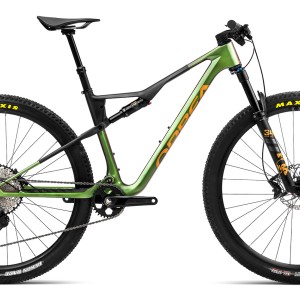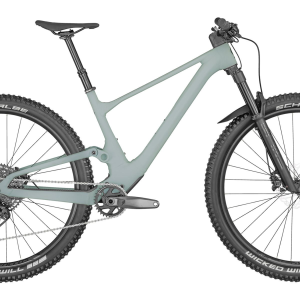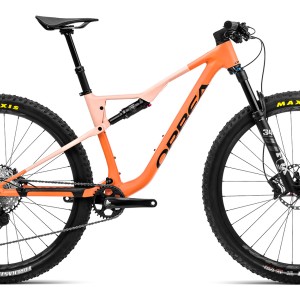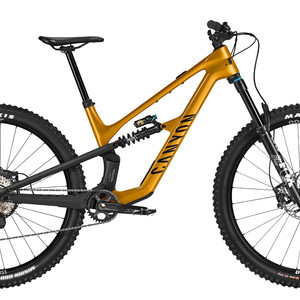2013 Diamondback Sortie 3 29
(discontinued)
| Where To Buy | |||
|---|---|---|---|
Free U.S. shipping on orders over $45.
International shipping available. Some exclusions apply. |
|||
Free shipping on orders over $50 (continental U.S. only).
International shipping available. Some exclusions apply. |
|||
Free shipping on orders over $50 (continental U.S. only).
International shipping available. Some exclusions apply. |
|||
Free standard shipping on orders of $50 or more (U.S. only).
International shipping available. Free on orders of $150 or more. Some exclusions apply. |
|||
Reviewed by Steve Wentz, Joe Schneider, and Brandon Turman // Photos by Shawn Spomer and Brandon Turman
Inspired by their already existing 26-inch Sortie platform, Diamondback super sized everything in 2012 to bring it up to 29-inch standards. One year and few minor refinements later, the 2013 Sortie 29 serves up 4.5-inches of travel via Diamondback's unique Knuckle Box suspension design and benefits in many ways from the big wheel. We've heard Diamondback DF5 team member Eric Porter say great things about the Sortie 29 in the past, and considering that he's the type of guy that likes to have fun on trails like we do, we were interested in giving the bike a go. The Sortie 29 lineup consists of four models, and the second-tier Sortie 3 29 model showed up on the doorstep ready for a good thrashing during our 2013 Test Sessions in Southern Utah.

Sortie 3 29 Highlights
- 6061-T6 Weapons Grade Aluminum frame
- 29-inch wheels
- 114mm (4.5-inches) of rear wheel travel
- Tapered headtube
- 69.5-degree head angle
- 73-degree seat tube angle
- 330mm (13-inch) bottom bracket height
- 455mm (17.9-inch) chainstays
- 142mm x 12mm E-Thru Axle
- Measured weight (size Large, no pedals): 31-pounds, 11-ounces (14.45kg)
- MSRP $4,000 USD
The Sortie 3 29 frame features a hydroformed top tube, butted and formed downtube, tapered headtube, and plenty of standover clearance in a 6061-T6 Aluminum package. Custom cable guides along the down tube are better than most, and although a dropper post isn't spec'd, guides are ready for one on the underside of the top tube. You won't find any ISCG tabs on this frame, but a thread in bottom bracket will allow the use of a BB mounted chainguide. Thanks to the compact Knuckle Box suspension design, there's plenty of room for a water bottle mounts inside the front triangle.
Out back, the Sortie 3 29 uses a high direct mount front derailleur to keep the chainstays as short as possible and to help with rear tire clearance. A 142×12mm E-Thru Axle helps stiffen the bike a bit, in addition to a few minor updates from the 2012 frame. These updates come in the way of added material in the dropout area and under arch seatstay bridge, as well as slightly shorter seat stay linkage pieces. Note that mud clearance is really tight at the bridge, likely as a result of trying to keep the rear end snug.

Diamondback's Knuckle Box, also known as a bell crank, serves as the center of the single-pivot four-bar suspension platform and redirects bump forces from the seatstays to the shock. The system is characterized by a low leverage ratio with a linear to ever-so-slightly progressive leverage curve. The design keeps the majority of the weight low and centered, which helps out a bit in turns and with stability. A custom tuned FOX CTD Float rear shock compliments bike and offers a good platform when the trail heads uphill. All 14 Enduro Max bearings needed to keep the system running smoothly can be easily accessed thanks to the oversized, heat treated, single-sided hardware that rounds out the Sortie 3 29.
On The Trail
Because Diamondback set out to bring the inherent benefits of the 29-inch wheel to the Sortie, we saved it for the days when we knew we could appreciate the improved roll-over, larger tire contact patch, and fast rolling speeds. Both Steve and Joe chose to ride it on Saint George's Zen Trail while Brandon opted for some Barrel Roll to Sidewinder action. The Zen Trail is littered with techy bits, square edge hits, rock ledges, and g-outs. In contrast, Barrel Roll and Sidewinder are relatively smooth, but have several rocky patches interspersed along a slight pitch with dozens of turns.
Prior to hitting the dirt, we swapped out the 90mm Easton EA70 for something 20mm shorter and a little more manageable. We didn't go so far as to change out the 685mm Easton EA70 bars for a wider setup, but if we had time to ride the bike for a longer period we would have. Combined with a 23.5-inch top tube on our size Medium test bike, the resulting 70mm stem + 685mm bar combo felt a little on the short end. Anyone over 5-foot 9-inches might consider sizing up if you like a little room in the cockpit, especially if you prefer the handling of a short stem.

Like most 29ers, we thought the head angle was a tad steep. Coming in at 69.5-degrees, the Sortie 3 29 relied on its big wheels and 120mm FOX fork to prevent us from flipping over the bars when things got rough. This number made it nimble up front, decent on the descents, and pretty solid on the climbs with no obvious wandering of the front wheel. The 17.9-inch chainstays were on the long end of the spectrum and made the front end hard to pull up. In addition, the 13-inch bottom bracket height helped when carving turns, but we spiked our cranks and pedals a handful of times in rough bits. In general though, there were no major geometry quirks that were bad for the ride.
More so than any other bike we've ever ridden, our overall sensation while riding the Sortie 3 29 was tractor-like. It didn't want to accelerate or move around quickly, but once up to speed it held it very well. We could also relate the feeling to that of a heavy downhill bike. Solid, planted, and stable, but most definitely not lively or playful, the bike felt like it was in charge most of the time and was hard to direct with precision. In corners we really had to push it hard and early to achieve the desired result, and tight turns were a struggle due to the long rear end and 29-inch wheels. In addition, the bike didn't like to change lines quickly at higher speeds.
The bike's saving grace on the descents was the Knuckle Box suspension. Once dialed in, the bike performed above average through many point and shoot sections, simply because it could plough through. Small bump performance was great, square edges were good, and g-outs were dealt with surprisingly well. We never felt the suspension bottom out harshly, which is great considering the relatively small amount of travel. Come to think of it, almost all bumps were handled very well, with the exception of successive hits. It seemed to get a little overwhelmed in sustained chatter and would pack in. In order to avoid feeling any further forward on the bike considering the top tube length, we wouldn't want to increase the rebound to make this better, and we all agreed that there wasn't much in reserve to save you from a bad situation. It rolled over stuff pretty quickly, but there was some slight hang up at the front end due to the head angle, a feeling that likely would have been worse with the stock stem.
While launching the bike off a few drops in the name of science, we did experience a rather unnerving squirmy feeling. Keep an eye on the rear wheel in this video, where Steve sends a small roller to an off camber landing:
As you can pretty clearly see, the rear wheel and swingarm flex a fair amount. This is even more evident when wrenching on the rear wheel or bottom bracket in the parking lot. We'd occasionally get kicked sideways at speed, and while the Sortie 3 29 recovers from this quickly, the squirm made us less inclined to push the envelope. Through small chatter, corners and most things we thought the bike was stiff enough for a 29er, but it definitely has limits when being ridden hard.

Coming in at nearly 32-pounds, the Sortie 3 29 weighs in quite heavy, and it rides like it too. It goes where it's pointed, is stable, and climbs well, but there is no getting around the fact that you are pedaling all that weight around. We think there are at least a few hundred grams to be lost in the WTB Wolverine tires and WTB Laser Disc Trail wheels, which could help the bike considerably. Frame flex also seemed to add to the heavy feeling, robbing both speed and power when really on the gas. Further, we wish the bike a higher amount of anti-squat for quick power transfers, and could feel the shock compressing when under power.
Considering the weight, seated climbing performance was excellent. The bike was a very efficient climber, and although we wish it was just a little bit longer in the top tube, body position was good. The suspension kept a surprising amount of traction and got through everything with ease. Only rider error and the relatively hard to pull up front end kept us from getting up a couple of very tough tech spots. There was no noticeable bobbing in either of the chainrings.
Build Kit
The list of components on the Sorter 3 29 is just about what we'd expect for a bike priced at $4,000. It consists of mostly mid-level offerings, and although there are a few areas that we think could be improved, there are some standouts as well.
Easton's EA70 cockpit will provide a decent starting place for novice riders, though we'd suggest something wider and shorter for most people.
This price point falls right on the border between bikes that do and don't have an adjustable seatpost, and it's an upgrade we'd recommend for any serious rider. In its place is a Easton EA70 seat post, which gets the job done with its dual-bolt clamp design and quick-release seat clamp. On top of the post rests a WTB VIGO Comp saddle, which was comfortable and we'd be a-okay with riding for 3-4 hours at a time.
Bump duties fall on FOX's dampers, and the bike comes with a Float CTD rear shock and fork. While the 32mm fork helps to keep weight down a little, it has flex issues of its own. Bigger or more aggressive riders may notice this on the trail.

Shimano XT brakes are perhaps the highlight of the build. Combined with a 180mm front and 160mm rear rotor, braking performance was solid. There was no fade, good initial bite, plenty of power, and they felt great.
The clutch equipped Shimano XT Shadow+ rear derailleur provided crisp, clean shifts time and time again while keeping things in check over rough sections. Chain noise was minimal as well, but know that the bike can be quieted even more by adding some protection to the back and undersides of the seatstay. Though we think it might have been a fluke (however the spec list suggests otherwise), our test bike was equipped with a 3X front shifter and derailleur - the issue being that the bike is also spec'd with a 2X crankset. The two aren't really compatible.
WTB's 2.2-inch Wolverine tires were very predictable, but the sidewalls didn't provide a lot of support. This may have contributed to the feeling of bouncing sideways when we were pushing the bike hard. The same can be said about WTB's Laser Disc Trail wheels. Like we mentioned previously, there is some substantial weight to be lost here. On the bright side, the tires do roll quickly.
Long Term Durability
The only long term issues that we think may develop surround the flex issue. Over time, excessive flex can lead to fatigue. There are also 14 bearings to worry about. Note that while Diamondback's warranty policy provides up to five years of coverage for the frame, all suspension components (aka the entire rear end) are only covered for one year.

What's The Bottom Line?
We wanted to like the Sortie 3 29. We really did. It builds off a generally well received 26-inch platform, handles most bumps like a champ, climbs well and has a pretty decent parts spec. Unfortunately, the bike seems to be a bit confused. As spec'd, it wants to be an efficient all day bike, but the overall weight is a huge hindrance after a while. If it is for fun having, the bike needs a little more travel, a shorter stem, wider bars and a dropper post. In either case, the excessive flex and long rear end limit the way you can ride. The bike certainly doesn’t beg to go faster, pop about, or have fun, and there are some lighter and stiffer bikes to be had for the $4,000 price tag.
Who might be a good fit for the Sortie 3 29? Someone who enjoys a super stable, comfortable ride that stays planted to the ground will delight in this ride. The bike is best suited to smooth, flowy trails with little elevation difference so you can motor along without having to worry about flex, power loss, or the ability to pick up over rocks.
Following Up
Judging by the small changes from the 2012 to 2013 Sortie 29 frame, specifically those in the dropout and seatstay bridge areas, it's clear to us that Diamondback is aware of some of the things we experienced and is trying to improve their design. Knowing this, we reached out to them for a comment about where they plan to go from here, and if any additional changes are in the works for the upcoming 2014 model year:
"The Sortie platform has been a highly successful and evolutionary process for us. From a 26-inch trail bike to a 29er, the vision for the platform continues to evolve. The current model year Sortie 29er is in its second year of production. We’ve kept the geometry the same as it's pretty standard for a 29-inch trail rig. We have, however, made some revisions to the bridge on the chain stay… beefing it up and significantly increasing the stiffness of the rear end. Concurrently, the bell crank has been moved slightly and anchored the pivot through the down tube, reducing stresses on the down tube and increasing stiffness. The 2014 Sortie will also feature a 130mm fork to slightly slacken out the front end.
The Sortie 3 29 is a bike that’s well positioned for your 29-inch trail rider. With geometry that’s in line with most bikes in this class, we feel that this bike competes with the best of them. Bump up a notch to the Sortie Black 29 with a full XTR kit and your weight goals are achieved. A wider bar and shorter stem, while preferable by some, are not in line with the intention of the bike.
We will continue to refine what has already been a well-received bike for us." -- Diamondback
Progress... We like that, and we hope to give the updated Sortie 29 another look someday in the future. There's good potential in this frame and it's dying to be let out.
For more about Diamondback's lineup, visit www.diamondback.com.
Bonus Gallery: 28 photos of the 2013 Diamondback Sortie 3
About The Reviewers
Steve Wentz - A man of many talents, Steve got his start in downhilling at a young age. He has been riding for over 17 years, 10 of which have been in the Pro ranks. Asked to describe his riding style he said, "I like to smooth out the trail myself." Today he builds some of the best trails in the world (and eats lots of M&M's).
Joe Schneider - During the day, Joe's busy solving complex mechanical engineering problems. When he's free, he's out crushing miles on his bikes and moto. He raced cross-country for several years, made an appearance on the Collegiate National Champs Omnium, turned Pro, and more recently shifted his focus to enduro.
Brandon Turman - Brandon likes to pop off the little bonus lines on the sides of the trail, get aggressive when he's in tune with a bike and talk tech. In 13 years of riding he worked his way through the Collegiate downhill ranks to the Pro level. Nowadays he's Vital MTB's resident product guy.
Specifications
| Where To Buy | |||
|---|---|---|---|
Free U.S. shipping on orders over $45.
International shipping available. Some exclusions apply. |
|||
Free shipping on orders over $50 (continental U.S. only).
International shipping available. Some exclusions apply. |
|||
Free shipping on orders over $50 (continental U.S. only).
International shipping available. Some exclusions apply. |
|||
Free standard shipping on orders of $50 or more (U.S. only).
International shipping available. Free on orders of $150 or more. Some exclusions apply. |
|||














































2 comments
Post a reply to: 2013 Test Sessions: Diamondback Sortie 3 29